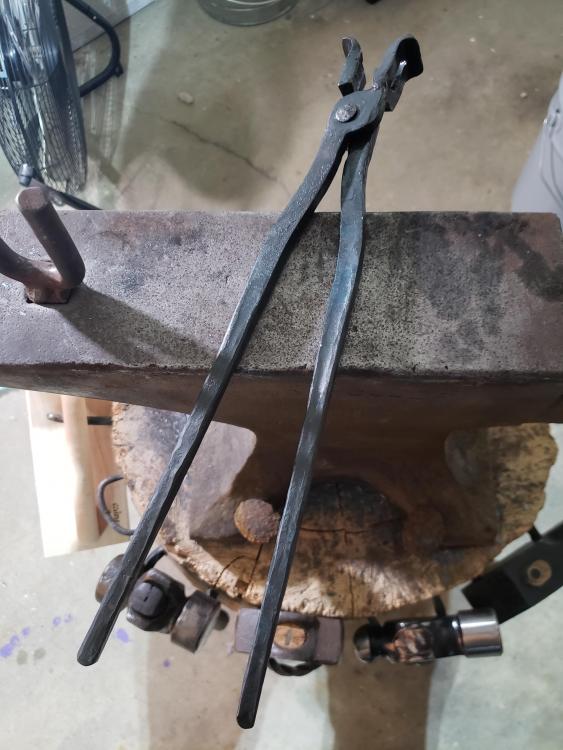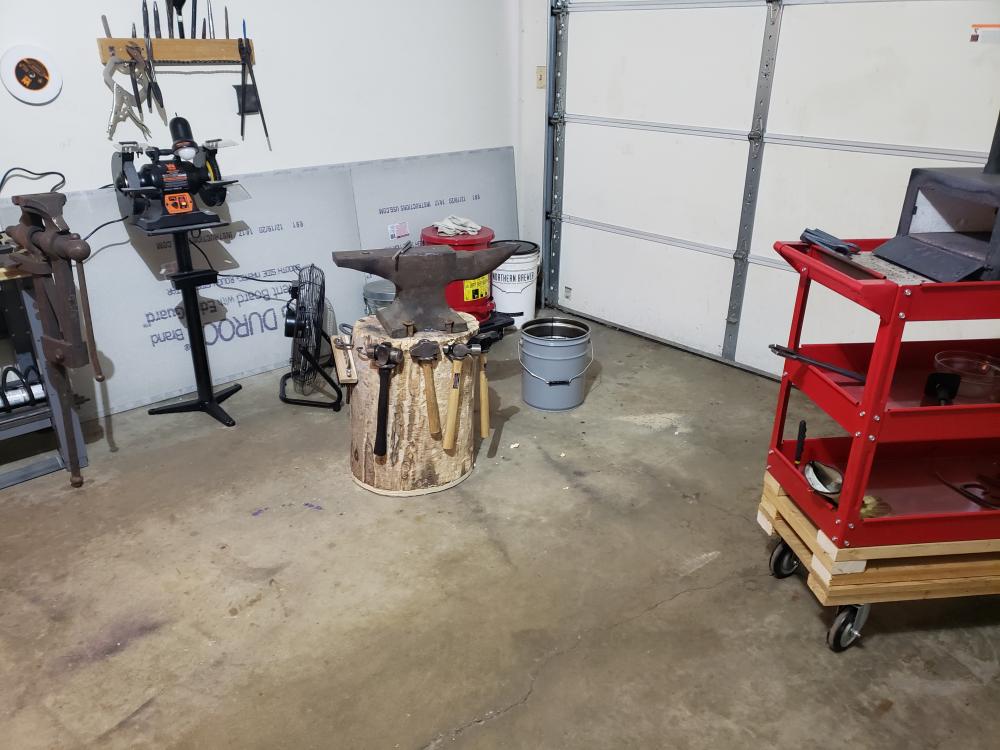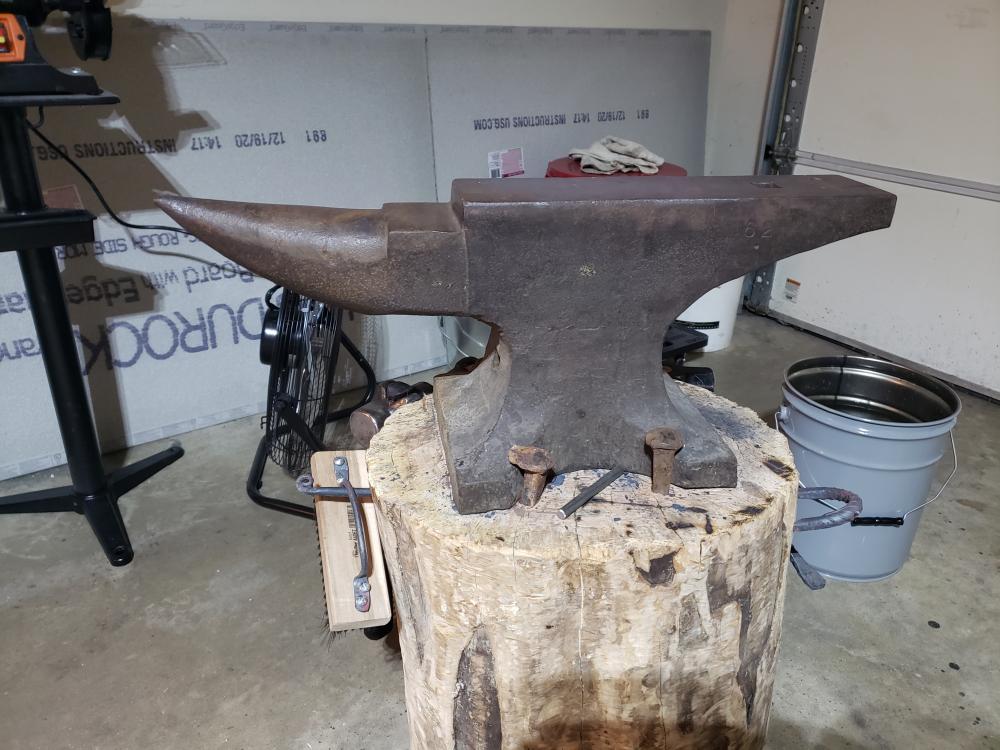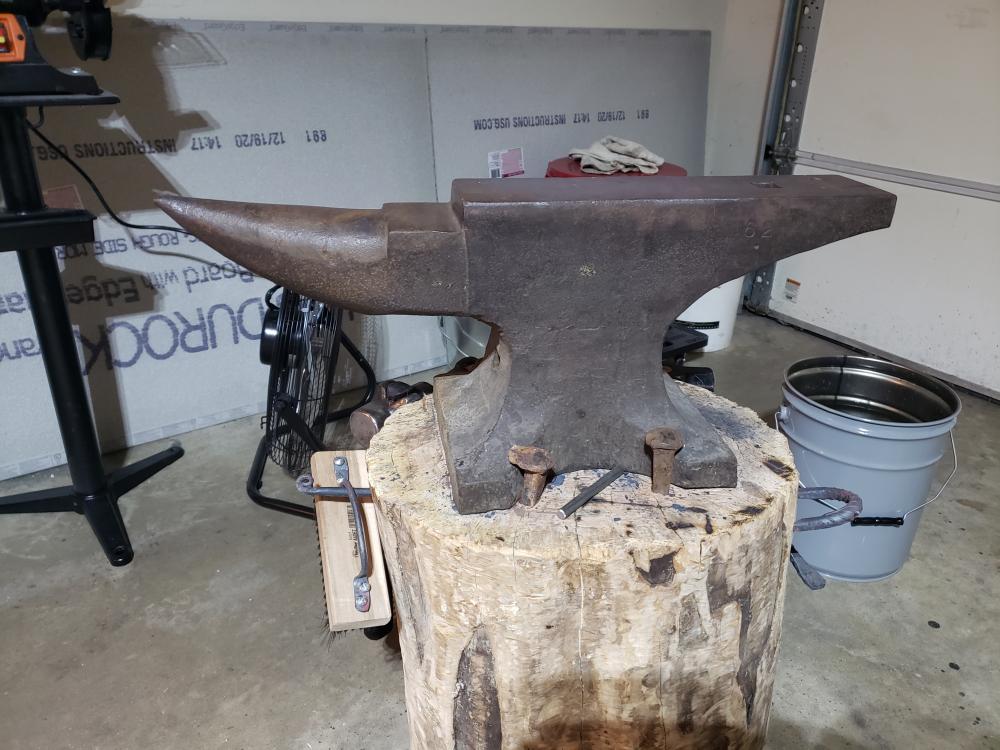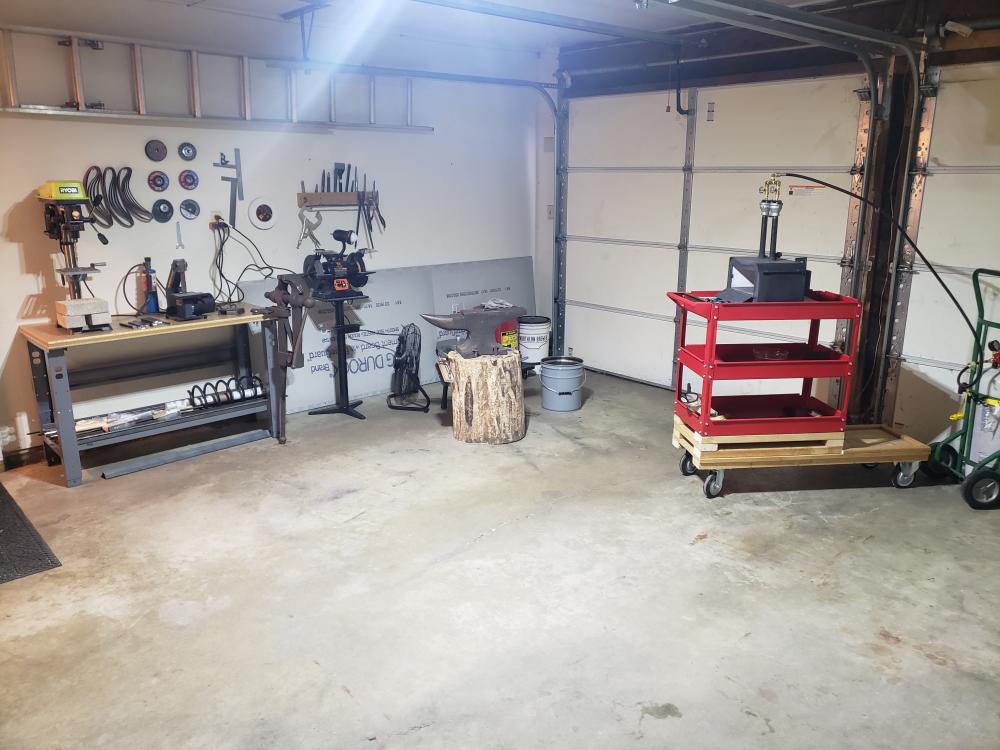-
Posts
114 -
Joined
-
Last visited
Content Type
Profiles
Forums
Articles
Gallery
Downloads
Events
Everything posted by Kexel Werkstatt
-
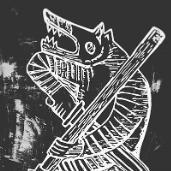
What did you do in the shop today?
Kexel Werkstatt replied to Mark Ling's topic in Blacksmithing, General Discussion
-
Whoever smelt it dealt it?! Sorry.
-

The 15/16" Hardy Hole Conundrum
Kexel Werkstatt replied to Kexel Werkstatt's topic in Anvils, Swage Blocks, and Mandrels
True, good point. -

The 15/16" Hardy Hole Conundrum
Kexel Werkstatt replied to Kexel Werkstatt's topic in Anvils, Swage Blocks, and Mandrels
Thomas was speaking to JHCC about the bead weld... he suggested to me what I'm doing, making the Hardy hole larger. I also mentioned in the post that I cannot make my own right now... but if I could problem solved. Thanks Jealdi for the offer, very kind. I may take you up on it in the future! Much appreciated. -
If you need some stock let me know, happy to help. I have 1/4x3/4" flat, 1/4x1" flat, round in 1/4, 3/8, 1/2, 3/4 and 1", square in 5/16", 3/8", 1/2", 3/4" (All 1018). I also have a few short pieces of 3/4" S7 and 4140. I don't know if you're looking for full 20' sticks but I have quite a few 4' sections of bar stock if you are in need.
-
Well thank you! I'll take a look as I do need a few odds and ends.
-
Hello Gryphon, I'm in Lombard, not too far away. I bought my first batch of A36 and 1018 from Metal Supermarkets in Bolingbrook. Not the least expensive, but they had what I needed. There are not a ton of options in our area.
-

The 15/16" Hardy Hole Conundrum
Kexel Werkstatt replied to Kexel Werkstatt's topic in Anvils, Swage Blocks, and Mandrels
Thanks guys, I'll move it up to 1" as that was my first instinct and I think it makes the most sense since I only have three total tools for it that are undersized - if I had 20 on the rack that would be different. I plan to take the file vertically from the top on all four sides (slowly/carefully) to see if it does indeed file the face... and if not I'll come from the bottom and use the Dremel with a stone to make the face match the body dimensions. Thanks again all. -

The 15/16" Hardy Hole Conundrum
Kexel Werkstatt replied to Kexel Werkstatt's topic in Anvils, Swage Blocks, and Mandrels
Frazer - thank you and yes totally possible but what I'm wondering is if it makes more sense to just move it up to a 1" which is very standard, and I see a ton of options for tools with 1" shanks, not nearly as many with 7/8" shanks, and I am not ready to make my own Hardys yet (that I could just fit specifically to my Hardy hole/done deal). -

The 15/16" Hardy Hole Conundrum
Kexel Werkstatt posted a topic in Anvils, Swage Blocks, and Mandrels
Ok, I did a search using the site:iforgeiron.com technique and did not see anything specific to this question/scenario. My Hay Budden anvil has a 15/16" Hardy hole. Confirmed using two different calipers multiple times on all four sides top and bottom. When I bought the anvil, the gentleman I bought it from was gracious enough to sell me a couple spare hardy tools to get me started (bending fork and a hot-cut). He also sold me a homemade guillotine with a simple fuller die set and I will be making more for it - love that thing. The tools he sold me all have 3/4-7/8" shanks (somewhat standard) - which is definitely close enough but they do still rattle in the hardy hole a bit. What's fun about this is after looking up the old Hay Budden Anvil catalogs my 150lb should have had a 1" hardy hole according to what I saw. But I digress. My options are to either open up the hardy hole to 1" as there are a ton of options out there for 1" Hardy holes. Or, make sleeves to bring up 7/8" hardy tools to 15/16. This would be quite tricky as even if I use simple 1/32" sheet to do so, it goes over 1" total when I'm done... if I sleeve all four sides. I think I've answered my own question, which is to open the hardy hole to 1" and just sleeve the guillotine as best as I can (as they are expensive), and replace the fork and hot cut (not too expensive), and move on. Thing is, I know I'm not experienced enough to have thought about all potential remedies (I do not have a welder FYI),a nd was wondering if any of you all had some input here. Also, if I move forward with opening the hardy hole, is it safe (for the anvil/hardy hole) to just use a simple file to do so? Of course I would take my time doing so and constantly check the dimensions throughout. I can't imagine there being any issues with this method but again I'd rather ask the more experienced folks first. Thanks in advance. I tend to overthink things sometimes but I don't want loose Hardys rattling around causing misshapen hardy hole issues down the road. -
Hey Mark, this is also Mark, from the Lombard area. I just got started back up about a month ago and went to Metal Supermarkets in Bolingbrook for my first run. I doubt they are the cheapest but I got what I needed. I am also looking for alternatives as well as decent scrap yards so please let me know what you find and I'll do the same.
-
I thought this was a great tribute... and I'm sure it has been posted here before at some point, but I would never find it. At least now I can under "my topics" or whatever. We found it, and merged this with the existing thread
-

In Search of Left Handed Angle Peen 2.5 Pound Hammer
Kexel Werkstatt replied to Kexel Werkstatt's topic in Hand Hammers
-

In Search of Left Handed Angle Peen 2.5 Pound Hammer
Kexel Werkstatt replied to Kexel Werkstatt's topic in Hand Hammers
Thanks Anvil. It's a work in progress. I'll give the adjusted stance a try and see how it works for me. As far as the hammer goes, I've got it half-ground but will probably not be able to finish it today. Even after grinding I have to dress it, etc. Then I'll give it a spin and see if I should invest the time in a handle swap. -

Another Hay Budden Serial Number Please
Kexel Werkstatt replied to IdahoIronman's topic in Anvils, Swage Blocks, and Mandrels
Thanks arkie, I took a one-day one on one class with an established smith about a month ago about 2 hours away and he had a few anvils to sell. I saw this one and snagged it. If I spent more time on it with the wire a lot of that surface rust would come off but it works great the way it is. I'm very happy with it. He also had a 200 pound Trenton but it was more than I wanted to spend and this one "rebounded", sounded and looked better overall. -

In Search of Left Handed Angle Peen 2.5 Pound Hammer
Kexel Werkstatt replied to Kexel Werkstatt's topic in Hand Hammers
Thanks arkie, I've only had it setup for a few weeks and yes I am a serious stickler for cleaning up after every session. I have a woodworking area in that same shop and am the same way with it. If I have 4 hours to work on any project, the first 15 minutes goes to setting everything up, I have 3.5 hours of work I can do and the last 15 minutes goes to clean-up. With a Blacksmith and woodwork shop in the same space, it is incredibly important to not leave sawdust/steel dust/hot anything/tools/etc a mess... not only for general safety but also as a fire prevention measure. I keep a Stihl leaf blower in the shop and take a few minutes every session to blow all the dust, scale, whatever right out the garage doors to keep things clean. I am sure as time goes on, things will develop more of that caked-on stain though! -

Another Hay Budden Serial Number Please
Kexel Werkstatt replied to IdahoIronman's topic in Anvils, Swage Blocks, and Mandrels
Thanks! -

Another Hay Budden Serial Number Please
Kexel Werkstatt replied to IdahoIronman's topic in Anvils, Swage Blocks, and Mandrels
Ok looks like it might be 1910 based on one of the previous replies above also with a serial #175XXX (if that's how it works with their #'s). Also has a 62 stamped on the oppososite side of the name stamp, also looks like a T-#4 or something similar (can't quite make it out) below the waist on the name stamp side, and either a 3 or an 8 on the front base. -

Another Hay Budden Serial Number Please
Kexel Werkstatt replied to IdahoIronman's topic in Anvils, Swage Blocks, and Mandrels
My ~150 pound Hay Budden has a serial number of 175673 You guys still able to look up the year? Thanks! -
-

In Search of Left Handed Angle Peen 2.5 Pound Hammer
Kexel Werkstatt replied to Kexel Werkstatt's topic in Hand Hammers
Thank you for all your advice but I don't believe I ever said I was having any problems. I just don't think your approach works for me, my setup, my body, my eyes, my arms, etc. I have watched a ton of videos including those from Brian Brazeal, Mark Aspery (two different styles) and many others. I fully understand what you are saying, but even all of those gentlemen are standing at the anvil at an angle. Only when punching, holding stock between their legs, etc are they standing at a zero degree angle. I have a ~150 pound Hay Budden traditional Blacksmith (London Pattern) anvil and my horn is on my hammer hand side because I do not mind the extra half step to use it, while keeping my hammer hand clear of my Hardy hole as I use it often for cut-off's, guilotining, etc. I totally respect your experience and truly appreciate your advice, but many folks have diagonal peen hammers for the very same reason I want one. It isn't because I can't use a straight or cross peen, its because I can definitely see the advantage of its orientation when drawing out in my natural stance. I agree with you on shop layout and mine is very similar although my post vise is not in its ideal spot. Thats because I'm working with limited space in a garage where I have other work, storage and once in a while, an actual vehicle parked in it. I can bring stock from my forge to the anvil in one step and a slight turn, but my vise is two steps away from my anvil. Not ideal but its what I have to work with. Thanks again for all your input. Ok here is a picture of my Blacksmithing area in my shop (garage) -

In Search of Left Handed Angle Peen 2.5 Pound Hammer
Kexel Werkstatt replied to Kexel Werkstatt's topic in Hand Hammers
Ok to clarify, when I look down my feet are shoulder width apart, neither is really "forward" of the other. I communicated poorly. Since my natural stance is at about 45 degrees I meant my left foot is closer to the anvil... not really "forward" of the other. Sorry for the poor explanation. I bought the 3 lb H.F. hammer and have already started grinding on it. Once I figure out how to post pictures I will do so of the hammer progress and my shop/stance to better explain my setup. -

In Search of Left Handed Angle Peen 2.5 Pound Hammer
Kexel Werkstatt replied to Kexel Werkstatt's topic in Hand Hammers
Right foot forward feels totally unnatural to me. I am left handed but I "bat" righty, golf righty, and my left hand is what I use to write, it is more dexterous. I stand left foot forward, hammer hand closer to the anvil, and my natural stance is at about 45 degrees. Otherwise my off hand, holding the material, is at the anvil and the reach of my hammer hand seems too far away. My horn is at my left, my hardy and pritchel holes are to my right. I move around as needed of course but that is my general "working on the face" stance. I don't think your suggestions would work for me. I just went and tried them and it does not feel right in any way. Different strokes/folks I guess. -

In Search of Left Handed Angle Peen 2.5 Pound Hammer
Kexel Werkstatt replied to Kexel Werkstatt's topic in Hand Hammers
Thomas - I would try it for a hammer handle some day, sure. JHCC - Nothing really "dimensional" - no cabinetry work, etc. Most of what I have done over the decades are carvings, small gifts (spoons/bowls, etc.), and hammer and axe handles. I've done quite a bit of forestry work over the years on private property and I am a bit fancy when it comes to my axes specifically. My carvings have been in antler, wood, some stone (not much), and I have done some metal carving/engraving but not much. I've done quite a few custom rifle stocks for myself and others, and other odds and ends. Not a professional by any means, more of a hobbyist, but a hobbyist for a couple decades now. I've been doing my own axe handles for so long that it has always bothered me that I've always used axe heads that someone else made... so at some point when I'm ready for that step up I'll try making a few of my own. For now, I need to stick to the basics, fundamentals, and go from there. I understand all the theory, and I know what I'm supposed to do, but I also know better than to jump into it without mastering the simple things first. Books and videos only do so much... time at the anvil and learning from your mistakes is the best way to advance in my opinion. I could go make an axe this weekend, but I already know that the bit weld will be poor, the eye will be crooked, and I will have wasted my time and just be frustrated. Right now I'm just repeatedly running tapers, scrolling, drawing out, etc. to get my muscle memory built on little trivial pieces. I also need more tooling, which I will make myself over time. Time, is the least of which I have, so it will not happen overnight. -

In Search of Left Handed Angle Peen 2.5 Pound Hammer
Kexel Werkstatt replied to Kexel Werkstatt's topic in Hand Hammers
Thanks Glenn, yes, the woodwork portion of projects I am quite comfortable and experienced with, it's making things from metal where I lack the experience. I carve Antler, wood, make axe and hammer handles... have for a long time. It's the Blacksmithing/metal-work part that I'm finally getting back into after a couple decade hiatus. What I do for "big-box" factory hammer and axe handles is strip the finish, and rasp the new custom contour. Once fitment is correct for the hand(s) I will be using and where, I run them all through a 2 or 3 stage sanding process involving everything from belt to drum sanders, etc. Then I'll use wood burning pens on some to mark them as I wish, finish them in either BLO or Danish Oil, and then sometimes I will even torch them in stages and then add yet another couple layers of oil on top of that. I've found this process, for me, provides my hands (skin, muscles and joints) the best experience and really helps me use the tool ergonomically. I have Ash (Baseball bat turning blanks) and Hickory handle stock on my shelves as I rarely keep the original handle on anything, unless it happens to be so close to the profile I desire that I just need to do a little tuning and maybe refinishing. I usually hatchet/drawknife/spokeshave/rasp/sand new stock. With this H.F hammer project, as with he other H.F. hammer's I've ever come across, I'll see if the piece of metal is worth the woodwork time investment before I do it. I appreciate all the feedback, sincerely. This is a great group and I'm actually somewhat saddened I've been away from the craft for so long and am just getting to meet everyone now.

